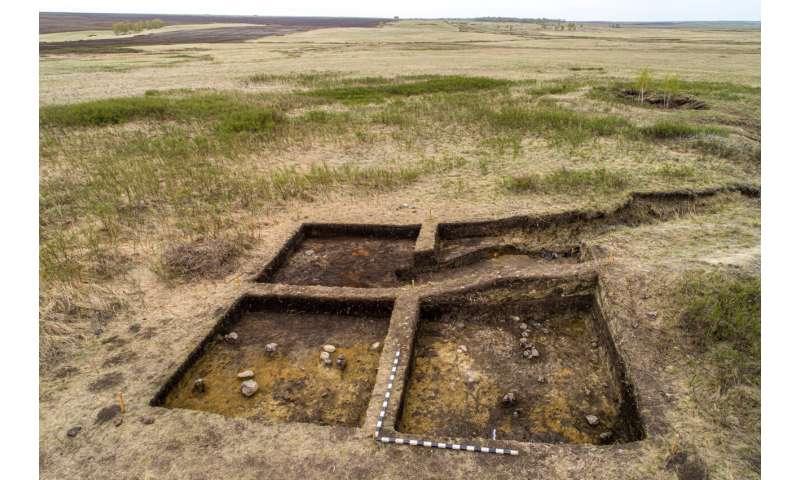Historians and Archaeologists Investigate Four Thousand-Year-Old Copper Mines in the Urals

The article published in the journal Archaeological and Anthropological Sciences (Q1) presents an analysis of the first series of radiocarbon dates associated with the beginning of copper mining in the Southern Trans-Urals and, in general, with the history of the development of deposits in the Southern Trans-Urals in the Bronze Age. The work was carried out by SUSU scientists within the Russian Science Foundation grant.
Historians and archaeologists study population mobility and migration in the Urals during the Bronze Age. One of the most important factors of the mobility of this era is the production of metal. The Urals are rich in metal deposits, but scientists still cannot say exactly when they began to be developed. To solve this multidisciplinary problem, a team of specialists in the field of archeology, geology, and radiocarbon dating from various academic institutions in Moscow, Yekaterinburg, and Miass worked. Andrey Epimakhov, D.Sc., Professor of the Institute of Media, Social Sciences and Humanities, Leading Researcher of the Institute of History and Archeology of the Ural Branch of the Russian Academy of Sciences took part in this study.
"In the article, for the first time, we accurately determined the time of the start of mining activities and found out that this was not just a short episode, as previously assumed. Throughout the second millennium BC, local miners mined ore and smelted metal, and we have received the first direct evidence of this. Ancient mines were widely used in the 18-19 centuries by Russian miners to search for ore resources. We are not only restoring an important episode in the region's history but also clarifying the geological map of the location of the deposits," says Andrey Epimakhov.

Scientists conducted 14 radiocarbon measurements on materials obtained from the cultural layers of four ancient mines. Dating covers the period from the end of the 3rd to the beginning of the 1st millennium BC. This long period of development of the mine included various stages coinciding with the regional archaeological periodization: Sintashta-Abashevsky, Srubno-Alakul, and the final Bronze Age.
"For a long time it was believed that all or almost all of the ancient mines were destroyed in the 18-19th centuries, but subsequent direct studies showed that most of the mines survived, often the miners "piled up", but did not develop the sites. There is a network of potential tourist sites that you need to be able to show. It is an important page in our history, 3,000-4,000 years ago these objects played a role in the formation of the Urals as an industrial region. The history of metallurgy cannot be limited to the history of one country or continent, so the interest in it is always huge. Now we can discuss many things, including the beginning of mining, and the mode of use of this mine. We are doing additional isotope studies that allow us to say that the mines operated seasonally, and people came from different places to work at the mine. The next stage is to find out where they came from, and how exactly the extracted raw materials were used in the Urals and beyond. This is one of the examples of why people have always been on the move, we remain homo mobilis as we were," the scientist says.
Exploration of mines is a very hard job for an archaeologist, there are no archaeological materials, and almost no finds, but scientists managed to get new information. New data testify to the existence of a complete metallurgical cycle in the Southern Trans-Urals throughout the entire Late Bronze Age and the consistent use of the local ore base by various population groups. Scientists plan to continue research work within the framework of RSF grants.
South Ural State University is a university of transformation, where innovative research is carried out in most priority areas of science and technology development. Following the strategy of scientific and technological development of the Russian Federation, the university focuses on the development of major scientific interdisciplinary projects in the field of the digital industry, materials science, and ecology. In 2021, SUSU won the competition under the Priority 2030 program. The university performs the functions of a regional project office of the Ural Interregional Scientific and Educational Center of the World Level (UMNOC) designed to solve the tasks of the national project "Science and Universities".
More information:
journal.asu.ru/tpai/article/view/10483
Provided by South Ural State University